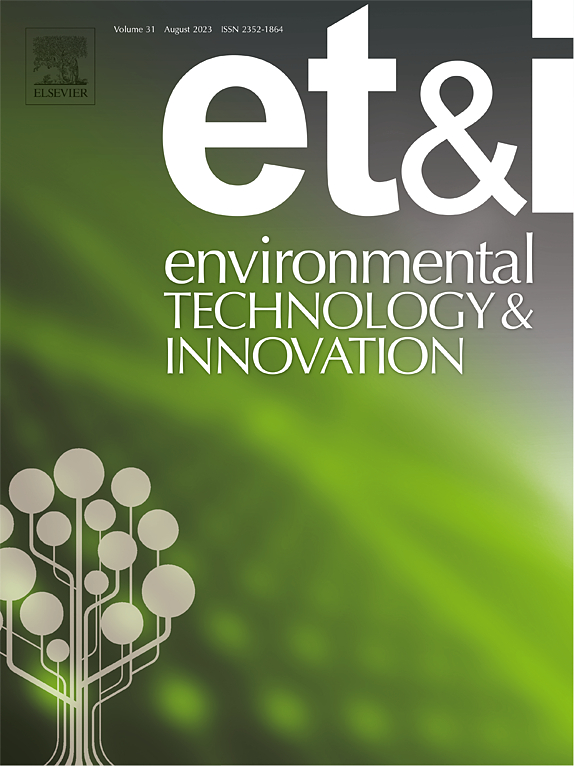The novel Dirammox process for advanced nitrogen removal from high COD content and ammonium-rich wastewater
IF 6.7
2区 环境科学与生态学
Q1 BIOTECHNOLOGY & APPLIED MICROBIOLOGY
引用次数: 0
Abstract
Direct ammonia oxidation (Dirammox) is a novel inorganic nitrogen metabolism pathway identified in the genus Alcaligenes, which could convert ammonia to N2 under aerobic conditions. With the remarkable nitrogen removal capabilities of this pathway, the heterotrophic genus Alcaligenes has considerable potential to efficiently and simultaneously remove nitrogen and organic matter from high chemical oxygen demand (COD) content and ammonium-rich wastewater. A novel lab-scale continuous-flow process termed “Dirammox membrane bio-reactor” (DMBR) was run over 9 months to test its possibility and efficiency for treating artificial ammonium-rich wastewater. There was stable performance, achieving an average ammonia removal (AR) of 95.4 %, total nitrogen removal (TNR) of 88.1 %, and COD removal of 95.0 %, with influent NH4+-N concentrations up to 600 mg/L and COD of 7800 mg/L. Dirammox bacteria dominated the functional community with a relative abundance of 5.70 %. The total denitrifying bacteria was only 0.13 %. Nitrifying bacteria were not detected. The relative abundance of denitrification and ammonia oxidation genes (amoA, hao) was low. The copy number of dnfA was 7.59 × 109/mg SS (dry), exceeding nirS [2.23 × 104/mg SS (dry)]. Aerobic denitrification was inactive in the activated sludge. The Dirammox pathway removed ammonia and total nitrogen (TN), but not those employed in traditional nitrogen removal techniques. In summary, the Dirammox process efficiently removes organic matter and TN while preventing harmful nitrogen compound formation, offering a novel, sustainable, and more efficient solution for treating high COD content and ammonium-rich wastewater.
求助全文
约1分钟内获得全文
求助全文
来源期刊

Environmental Technology & Innovation
Environmental Science-General Environmental Science
CiteScore
14.00
自引率
4.20%
发文量
435
审稿时长
74 days
期刊介绍:
Environmental Technology & Innovation adopts a challenge-oriented approach to solutions by integrating natural sciences to promote a sustainable future. The journal aims to foster the creation and development of innovative products, technologies, and ideas that enhance the environment, with impacts across soil, air, water, and food in rural and urban areas.
As a platform for disseminating scientific evidence for environmental protection and sustainable development, the journal emphasizes fundamental science, methodologies, tools, techniques, and policy considerations. It emphasizes the importance of science and technology in environmental benefits, including smarter, cleaner technologies for environmental protection, more efficient resource processing methods, and the evidence supporting their effectiveness.
 求助内容:
求助内容: 应助结果提醒方式:
应助结果提醒方式:


